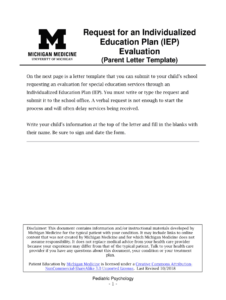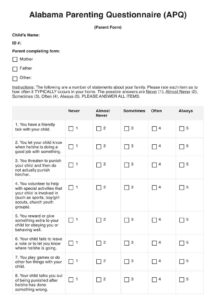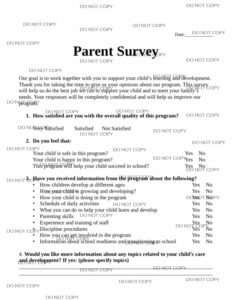Utilizing a structured format offers several advantages. It helps ensure all necessary information is included, streamlining the evaluation process and potentially expediting the timeline for obtaining services. Clear communication between all parties involved is facilitated, minimizing misunderstandings and promoting a collaborative approach to supporting the student’s educational journey. Furthermore, a standardized approach contributes to equitable access to evaluations, ensuring all students receive appropriate consideration for specialized support.
This article will further explore the components of such forms, the individuals involved in the process, and the steps involved in submitting a request for assessment.
Key Components of a Special Education Evaluation Request Form
Effective evaluation requests require specific information to ensure clarity and completeness. The following components are typically essential:
1. Student Information: This section includes basic identifying information such as the student’s full name, date of birth, grade level, school, and contact information.
2. Parent/Guardian Information: Contact details for the student’s parent or guardian are crucial for communication and consent purposes.
3. Reason for Request: A clear and concise explanation of the specific concerns prompting the evaluation request is necessary. This should include observable behaviors, academic difficulties, or developmental delays.
4. Previous Interventions/Supports: Documentation of any previous interventions, strategies, or supports implemented to address the student’s needs provides valuable context for the evaluation team.
5. Relevant Educational Records: Reference to existing educational records, such as report cards, progress reports, and previous assessments, can offer insights into the student’s academic history and performance.
6. Areas of Concern: Specific areas where the student is experiencing difficulty should be clearly identified, such as reading, writing, mathematics, communication, social skills, or behavior.
7. Signatures: Signatures from the parent/guardian and relevant school personnel authorize the evaluation process.
Accurate and comprehensive information within these sections enables a thorough evaluation, leading to appropriate interventions and support services for the student.
How to Create a Request for Special Education Evaluation
Developing a comprehensive request ensures appropriate consideration for specialized services. Careful attention to content and required information contributes to a more efficient and effective evaluation process.
1. Obtain the Necessary Form: Contact the student’s school or local education agency to acquire the official form for requesting a special education evaluation. Many districts offer these forms online through their websites.
2. Complete Student Information: Accurately provide all requested demographic information for the student, ensuring clarity and correctness.
3. Provide Parent/Guardian Contact Information: Ensure current and accurate contact details are provided to facilitate communication throughout the evaluation process.
4. Articulate the Reason for Request: Clearly and concisely detail specific concerns regarding the student’s academic, developmental, or functional needs. Objective observations and specific examples are crucial.
5. Document Previous Interventions: Describe any previously implemented interventions, strategies, or supports, including their duration and effectiveness. This information provides valuable context for the evaluation team.
6. Identify Relevant Educational Records: Note any pertinent educational records, such as prior assessments, report cards, or Individualized Education Programs (IEPs), which might inform the evaluation process.
7. Specify Areas of Concern: Clearly indicate the specific academic, developmental, behavioral, or functional areas requiring assessment.
8. Obtain Required Signatures: Secure the required signatures from parents/guardians and relevant school personnel to authorize the evaluation process. Submit the completed and signed form to the appropriate school official. Maintain a copy of the submitted request for personal records.
Following these steps ensures a well-structured request, facilitating a thorough and efficient evaluation process and ultimately contributing to the student’s educational success.
Access to appropriate educational support services begins with a formal request for evaluation. Understanding the components of these requests, the process for completion, and the importance of clear, concise documentation empowers parents, educators, and other stakeholders to effectively advocate for students with suspected disabilities. Leveraging standardized forms contributes to a streamlined and equitable evaluation process, ensuring careful consideration of individual needs and facilitating timely access to crucial support services.
Effective collaboration among parents, educators, and evaluation teams is essential for fostering optimal learning outcomes for all students. Accurate and thorough documentation within these requests lays the foundation for informed decision-making regarding individualized support and specialized instruction, ultimately promoting student success and well-being. Advocating for comprehensive evaluations is a critical step in ensuring that students receive the individualized support necessary to reach their full potential.



